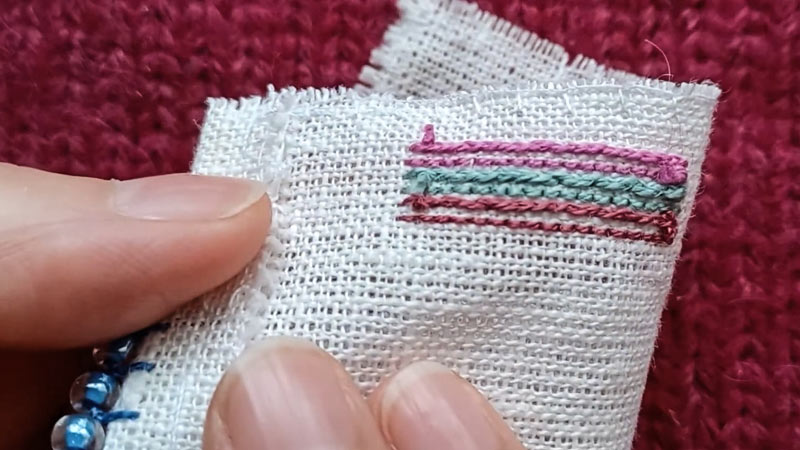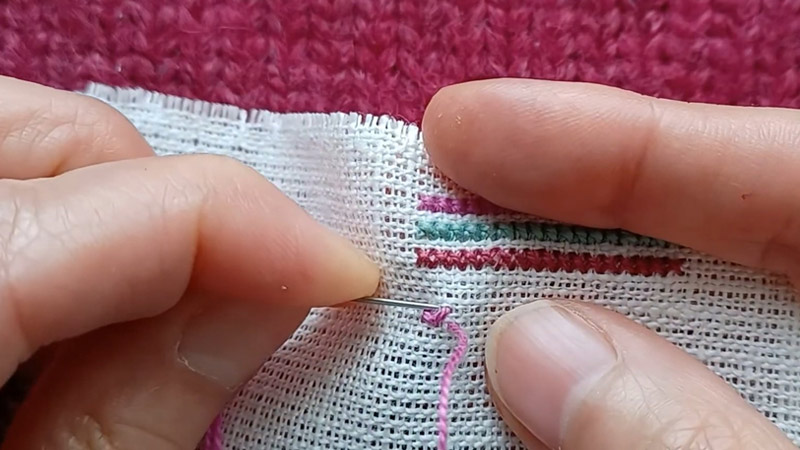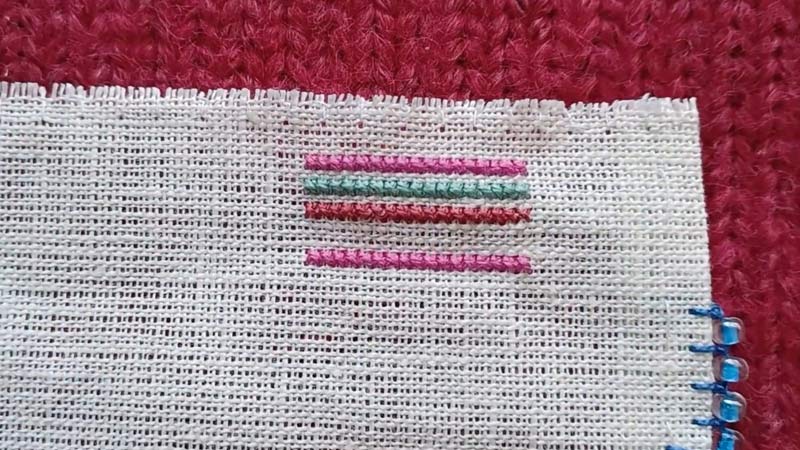Welcome to the enchanting world of Victorian Cross Stitch – a timeless needlepoint technique that embodies elegance and durability.
This guide invites you on a journey of creativity, offering step-by-step insights into mastering the art of Victorian cross stitch.
From selecting quality materials to understanding the intricacies of the stitch pattern, discover the key elements that bring this traditional craft to life.
Delve into the history of Victorian Cross Stitch, influenced by the refined aesthetics of the Victorian era, and explore the techniques that have been popularized by artisans like Elizabeth Bradley.
Unleash your creativity and embark on a captivating adventure in the realm of enduring needlework.

What Is Victorian Cross Stitch?
Victorian cross stitch is a traditional and enduring needlepoint technique that originated during the Victorian era and is known for its ability to create intricate and durable designs on canvas.
Also referred to as long-armed cross stitch or tent stitch, this method has stood the test of time, remaining popular for its distinct characteristics and timeless appeal.
Key Features of Victorian Cross Stitch:
Complete Canvas Coverage
The defining feature of Victorian cross stitch is its meticulous canvas coverage. Stitches are placed closely together, leaving no gaps and resulting in a solid, well-filled design.
Thick and Durable Texture
This technique produces needlework with a substantial thickness, contributing to its robust and hard-wearing nature. The densely stitched patterns add both visual and tactile depth to the finished piece.
Minimal Distortion
Victorian cross stitch minimizes distortion of the canvas shape. The stitches are carefully executed to maintain the integrity of the underlying fabric, resulting in a clean and well-defined design.
Alternative Names
This stitch is sometimes known by alternate names such as long-armed cross stitch or tent stitch, highlighting the method used in creating distinctive cross-shaped stitches.
Popularity in the Victorian Era
The technique gained prominence during the Victorian era, an influential period in the 19th century known for its emphasis on art, culture, and refined craftsmanship. Victorian cross stitch became a favored method for creating decorative and ornate needlework during this time.
Elizabeth Bradley’s Contribution
British designer Elizabeth Bradley played a pivotal role in reviving interest in Victorian crossstitch. She designed numerous kits and patterns showcasing this stitch’s beauty and versatility, helping preserve and popularize it in contemporary crafting.
How Do You Do Victorian Cross Stitch?

Doing Victorian cross stitch involves creating a series of cross-shaped stitches on a canvas to produce a well-covered, durable design.
Here is a step-by-step guide on how to do Victorian cross stitch:
Gather Materials
Before starting, collect the necessary materials – a printed canvas with a Victorian cross stitch pattern, wool yarn in matching colors, a blunt-tipped tapestry needle, and scissors. Ensure a comfortable workspace with adequate lighting.
Thread the Needle
Cut a manageable length of wool yarn, approximately 18 inches. Thread the needle, making sure it’s securely in place. The blunt tip helps prevent damage to the canvas threads.
Starting Point
Position the canvas and start at the bottom left corner. Bring the threaded needle up through the first hole, securing the yarn end on the back by weaving it under several stitches.
Create the First Stitch
Move one hole to the right, bringing the needle down through the second hole to form the first half of the cross stitch. This establishes the basic structure.
Complete the Cross Stitch
Move one hole up and one hole to the left, bringing the needle up through the third hole to complete the cross-shaped stitch. Continue this pattern left to right, bottom to top, until the end of the row or a color change.
Starting a New Row
To begin a new row, move one hole up and one hole to the left. Bring the needle up through the next hole and continue the alternating pattern until the end of the row or a color change.
Consistency is Key
Maintain uniformity in stitch size and direction. This attention to detail enhances the overall appearance of your Victorian cross stitch.
Securing Ends
Prevent unraveling by securing yarn ends. Weave them under several stitches on the back, ensuring a neat finish.
Continue Stitching
Repeat the process, row by row, until you complete the entire design. Take your time, enjoy the creative process, and feel free to experiment with color combinations.
Tips and Tricks for Victorian Cross Stitch

Dive into the world of Victorian Cross Stitch mastery! Uncover valuable insights and expert tips to elevate your needlework. Discover tricks that will transform your creations into timeless, enduring masterpieces.
Choose Quality Materials
Select a high-quality printed canvas, matching wool yarn, and a blunt-tipped tapestry needle. Quality materials contribute to the longevity and professional appearance of your cross stitch.
Keep Stitches Consistent
Maintain uniformity in stitch size and direction throughout your project. Consistency is key to achieving a polished and aesthetically pleasing result.
Work Methodically
Follow a systematic approach, working from left to right and bottom to top. This ensures a neat and organized pattern as you progress through your cross stitch.
Manage Color Changes Thoughtfully
When transitioning between colors, plan your stitches to create a seamless blend. Carry the yarn neatly on the back to avoid loose ends and maintain a clean finish.
Use a Blunt Tapestry Needle
Opt for a blunt-tipped tapestry needle to prevent splitting the canvas threads. This helps maintain the integrity of the fabric and ensures a smooth stitching process.
Cut Yarn into Manageable Lengths
Cut your wool yarn into manageable lengths, typically around 18 inches. This helps prevent tangling and makes the stitching process more efficient.
Secure Yarn Ends
Weave the ends of your yarn under several stitches on the back of your work to secure them. This prevents unraveling and adds to the durability of your cross stitch.
Protect Your Canvas
Roll up your canvas as you work to protect it from dirt and potential damage. This practice also helps you manage your work more comfortably.
Experiment with Color Combinations
Feel free to explore different color combinations to add a personal touch to your Victorian crossstitch. Experimenting with shades can bring uniqueness to your projects.
Create a Stitching Routine
Establish a consistent stitching routine to make progress on your projects. Set aside dedicated time, whether it’s daily or weekly, to ensure steady advancement.
Embrace Personalization
Add a personal touch to your cross-stitch projects by incorporating initials, dates, or other meaningful elements. Personalization makes your creations more special.
Explore Design Variations
Don’t hesitate to experiment with design variations. Victorian Cross Stitch is versatile; tweaking patterns can create unique and captivating results.
Share and Seek Inspiration
Join online communities or social media groups where fellow cross-stitch enthusiasts share their work. Seeing others’ projects can inspire and provide new ideas.
Practice Good Posture
Maintain good posture while stitching to prevent discomfort. Sit in a comfortable chair with proper back support and take breaks to stretch if needed.
Enjoy the Process
Above all, enjoy the creative process. Victorian Cross Stitch is a traditional and timeless art form. Revel in the satisfaction of seeing your intricate designs come to life.
Who Popularized Victorian Cross Stitch, and What’s Its Historical Significance?

Victorian cross stitch, also known as Berlin wool work or Berlin work embroidery, became popular during the Victorian era (1837-1901) in England and later in other parts of Europe.
The name “Berlin work” originated from the fact that Berlin, Germany, was a significant center for producing and distributing patterns and supplies for this type of needlework.
The popularity of Victorian crossstitch can be attributed to a few factors:
Queen Victoria’s Influence
Queen Victoria and her husband, Prince Albert, were known for their interest in the arts and crafts.
The royal couple’s appreciation for needlework and their promotion of domestic pursuits contributed to the rise of needlecrafts like cross stitch among the Victorian middle and upper classes.
Industrial Revolution
The Industrial Revolution brought advancements in textile production and dyeing techniques, making materials more accessible and affordable.
This allowed for the mass production of embroidery patterns, canvas, and brightly colored wool, making it easier for people to engage in needlework.
Middle-Class Pastimes
As the Victorian middle class grew, there was an emphasis on home-based activities and genteel pastimes. Needlework, including cross-stitch, became a popular leisure activity for women.
It was considered a suitable and respectable pursuit for ladies, providing both entertainment and a sense of accomplishment.
Pattern Books
The publication of pattern books was crucial in popularizing Victorian cross stitches. These books contained a variety of designs for embroidery projects, including charts for cross-stitch patterns. People could purchase these books and reproduce the designs in their homes.
FAQs
Is Victorian Cross Stitch suitable for beginners?
Yes, Victorian Cross Stitch is accessible for beginners. Start with simple patterns and gradually progress to more intricate designs.
What are some classic Victorian cross-stitch motifs?
Classic Victorian cross-stitch motifs include intricate floral patterns, botanical elements, alphabet samplers, Victorian houses, elaborate borders, tea and coffee themes, cameos, lace-like doilies, and sentimental phrases.
Can I use any design for Victorian crossstitch?
Yes, as long as the design is suitable for this stitch. Feel free to choose patterns that resonate with your style.
Why is consistency important in Victorian Cross Stitch?
Maintaining consistent stitch size and direction ensures a polished and professional-looking finished piece.
How do I troubleshoot canvas distortion issues in Victorian Cross Stitch?
To prevent canvas distortion, avoid using a frame or hoop. Roll up your canvas and follow a systematic stitching approach.
To Recap
Mastering Victorian Cross Stitch unveils a rich tapestry of artistry and tradition. By following the detailed steps and embracing the nuances of this timeless technique, you’ve embarked on a journey that blends history with creativity.
This guide’s intricate patterns, consistent stitches, and thoughtful tips empower you to create enduring masterpieces.
As you weave your needle through each carefully chosen canvas, you not only engage in a centuries-old craft but contribute to its ongoing legacy.
May your stitches tell stories, capturing the essence of Victorian elegance and ensuring the longevity of this captivating art form for generations to come. Happy stitching!
Leave a Reply